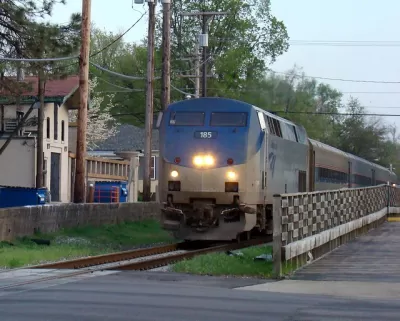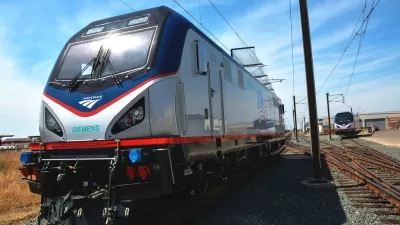Long awaited improvements on the Amtrak route between Chicago and St. Louis are being delayed again, this time because of trouble installing positive train control (PTC).

Faster rail service will not be ready by the end of this year as the Illinois Department of Transportation (IDOT) had once hoped. Trains are still unable to exceed 70 miles per hour along the Alton-Granite city corridor, but when work is done, trains will be able to move at 90 mph speeds across the whole route. IDOT now says that improvement will occur in 2020, but has yet to set a date for when train will reach 110 mph speeds the project originally sought.
"The time needed to install and test a new GPS-related safety technology positive train control, is the reason for the longer-than-expected implementation, officials say," Mark Schlinkmann reports for the St. Louis Post-Dispatch. Positive train control (PTC) is a federally mandated safety protocol that was not required when the project started. "The upgrade of the corridor, begun in 2010 and largely finished in 2017, also includes installation of new rails and concrete ties, new Amtrak stations in Alton and elsewhere and improved street crossing gates to keep vehicles from weaving around crossing bars," Schlinkmann writes.
Many upgrades to the route not related to PTC are already complete. "Other improvements were aimed at reducing delays that sometimes make trips longer than scheduled, such as adding or lengthening second-track segments and sidings so two trains can run simultaneously in more areas," Schlinkmann reports.
FULL STORY: Faster speeds on Amtrak route to Chicago delayed again

Study: Maui’s Plan to Convert Vacation Rentals to Long-Term Housing Could Cause Nearly $1 Billion Economic Loss
The plan would reduce visitor accommodation by 25,% resulting in 1,900 jobs lost.

North Texas Transit Leaders Tout Benefits of TOD for Growing Region
At a summit focused on transit-oriented development, policymakers discussed how North Texas’ expanded light rail system can serve as a tool for economic growth.

Why Should We Subsidize Public Transportation?
Many public transit agencies face financial stress due to rising costs, declining fare revenue, and declining subsidies. Transit advocates must provide a strong business case for increasing public transit funding.

How to Make US Trains Faster
Changes to boarding platforms and a switch to electric trains could improve U.S. passenger rail service without the added cost of high-speed rail.

Columbia’s Revitalized ‘Loop’ Is a Hub for Local Entrepreneurs
A focus on small businesses is helping a commercial corridor in Columbia, Missouri thrive.

Invasive Insect Threatens Minnesota’s Ash Forests
The Emerald Ash Borer is a rapidly spreading invasive pest threatening Minnesota’s ash trees, and homeowners are encouraged to plant diverse replacement species, avoid moving ash firewood, and monitor for signs of infestation.
Urban Design for Planners 1: Software Tools
This six-course series explores essential urban design concepts using open source software and equips planners with the tools they need to participate fully in the urban design process.
Planning for Universal Design
Learn the tools for implementing Universal Design in planning regulations.
City of Santa Clarita
Ascent Environmental
Institute for Housing and Urban Development Studies (IHS)
City of Grandview
Harvard GSD Executive Education
Toledo-Lucas County Plan Commissions
Salt Lake City
NYU Wagner Graduate School of Public Service




























